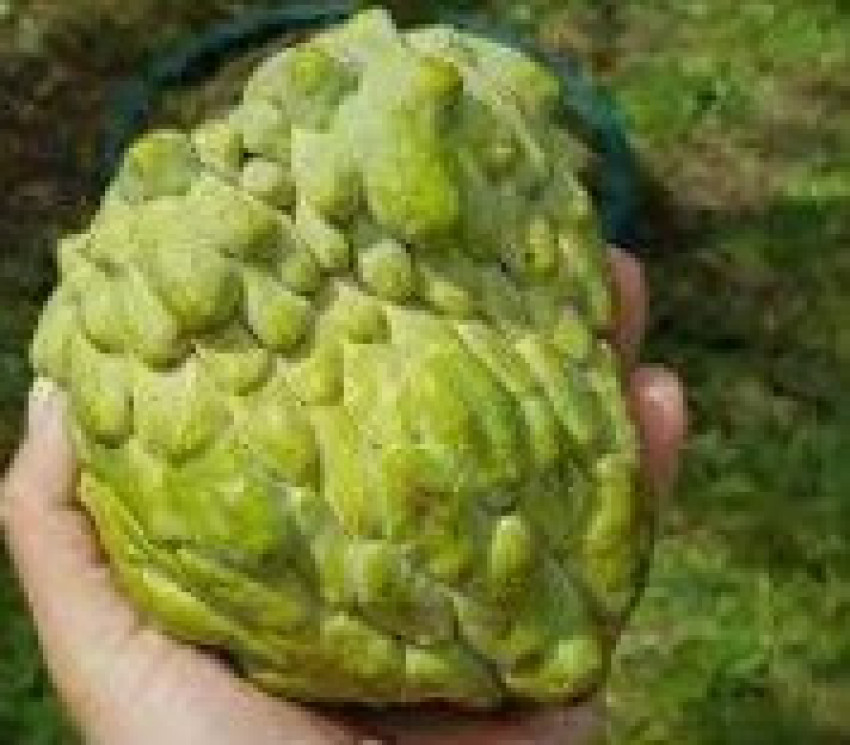
Nestled within the vibrant urban landscape of Sydney, a tropical delight graces the gardens of residents and horticulture enthusiasts alike—the Custard Apple. Scientifically known as Annona reticulata, this luscious fruit, also fondly referred to as "Cherimoya" or "Sugar Apple," has found a welcoming home in Sydney's diverse climates. As Sydneysiders explore the possibilities of growing tropical fruits, the Custard Apple stands out for its unique taste, versatility, and adaptability to the local conditions.
The Allure of Custard Apple in Sydney's Gardens
1. Tropical Elegance in a Temperate Climate:
Sydney, known for its temperate climate with warm summers and mild winters, might not seem like the ideal habitat for tropical fruits. However, the Custard Apple defies expectations, thriving in Sydney's diverse microclimates. With the right care and attention, Sydney's gardeners are discovering that cultivating Custard Apple trees can yield a rich bounty of delectable fruit.
2. Adaptability to Sydney's Conditions:
- Custard Apple trees are well-suited to Sydney's conditions, provided they are planted in well-draining soil and receive sufficient sunlight.
- Certain varieties, such as the "Pinks Mammoth" and "African Pride," have shown particular resilience in Sydney's gardens.
Growing Custard Apple in Sydney
1. Climate Suitability:
- Custard Apple trees thrive in subtropical and tropical climates.
- Sydney's diverse microclimates provide suitable conditions, especially in the warmer suburbs, for successful cultivation.
2. Soil and Sun Requirements:
- Well-draining soil is crucial for Custard Apple trees, preventing waterlogged conditions.
- Planting in a location that receives full to partial sunlight promotes healthy growth and fruit development.
3. Watering and Fertilization:
- Custard Apple trees benefit from regular watering, particularly during dry periods.
- Fertilize with a balanced, slow-release fertilizer to support the tree's nutritional needs.
4. Pruning and Maintenance:
- Pruning helps shape the tree and promotes air circulation.
- Regular maintenance, including pest control measures, ensures the tree remains healthy and productive.
5. Harvesting:
- Custard Apples are typically ready for harvest when the skin turns slightly yellow or green, and the fruit gives slightly when gently pressed.
- Harvesting by hand ensures the delicate fruits are handled with care.
Culinary Adventures with Custard Apple in Sydney
1. Exquisite Flavor and Texture:
- Custard Apple is renowned for its unique flavor profile, described as a blend of banana, pineapple, and vanilla.
- The creamy, custard-like texture of the fruit makes it a delight to enjoy fresh.
2. Culinary Applications:
- Custard Apple is a versatile fruit that can be enjoyed in various culinary creations.
- It complements both sweet and savory dishes, adding a tropical twist to salads, desserts, and smoothies.
3. Dessert Delights:
- Sydney's dessert enthusiasts have embraced Custard Apple as a star ingredient in pies, tarts, and ice creams.
- Its natural sweetness elevates the dessert experience, creating a symphony of tropical flavors.
4. Beverages and Juices:
- Fresh Custard Apple juice is a popular choice in Sydney, offering a refreshing and hydrating beverage.
- Mixologists in the city have incorporated Custard Apple into cocktails, introducing a hint of tropical elegance.
Community Engagement and Custard Apple Festivals
1. Community Orchards:
- Community orchards in Sydney have become hubs for Custard Apple enthusiasts.
- Shared spaces foster the exchange of knowledge and experiences, contributing to the thriving cultivation of Custard Apple trees.
2. Custard Apple Festivals:
- Custard Apple festivals have become annual celebrations in Sydney, bringing together local growers, chefs, and residents.
- These festivals showcase the versatility of Custard Apple in culinary delights, promoting its cultivation and consumption.
Challenges and Success Stories
1. Pest Management:
- Custard Apple trees can be susceptible to pests such as aphids and scale insects.
- Implementing organic pest control methods and maintaining a healthy garden ecosystem can mitigate these challenges.
2. Success Stories:
- Sydney's Custard Apple success stories are shared among gardening communities, inspiring others to embark on their tropical fruit-growing journeys.
- Local nurseries and horticultural experts play a pivotal role in supporting enthusiasts by providing guidance and resources.
Future Prospects and Sydney's Tropical Harvest
As the Custard Apple continues to capture the hearts and palates of Sydney's residents, the future looks promising for this tropical delicacy. Sydney's growing interest in tropical fruit cultivation indicates a shift toward embracing a diverse range of flavors and enhancing the city's culinary landscape.
Cultivating Custard Apple in Sydney goes beyond horticulture; it represents a harmonious blend of nature's bounty and the city's enthusiasm for culinary exploration. From community orchards to backyard gardens, the Custard Apple is leaving a sweet and lasting impression on Sydney's horticultural tapestry.
Conclusion: Sydney's Custard Apple Renaissance
In the heart of Sydney, where urban sophistication meets the allure of tropical elegance, Custard Apple trees stand as living testaments to the city's adaptability and willingness to embrace exotic flavors. From orchards to kitchen tables, Sydney's residents are savoring the tropical charm of Custard Apples, making it a staple in the city's culinary scene.
As more Sydneysiders join the Custard Apple renaissance, the legacy of this tropical fruit in the city is destined to grow, leaving an indelible mark on Sydney's gastronomic identity. The Custard Apple, with its creamy texture and exquisite taste, has become a symbol of the city's openness to diverse and delightful culinary experiences.




